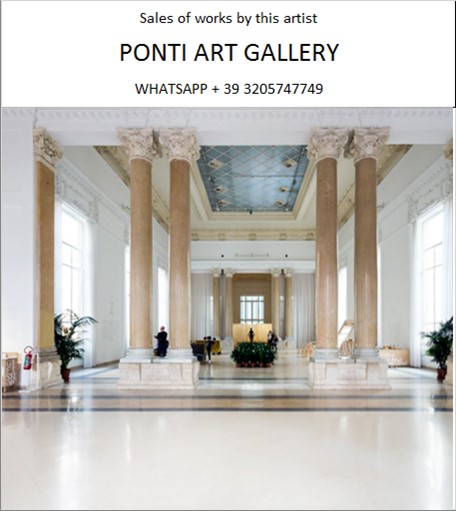Ponti Art Gallery is interested in buying and selling works
of art by this artist.

Giangiacomo Spadari Biography
Giangiacomo Spadari, born in 1938 in the Republic of San Marino, was an artist whose work spanned several decades until his death in 1997. Spadari's artistic journey began with a desire to express his vision of the world through his art, a vision deeply intertwined with political engagement and a quest to merge realism with a visionary pictorial space. His work is characterized by a profound political engagement, reflecting his desire to comment on and engage with the socio-political issues of his time. This engagement was not just thematic but also manifested in the choice of techniques and mediums, ranging from screen printing to color lithography, and in the subjects he chose to depict, from landscapes to political figures and events.
Spadari's career was marked by several solo exhibitions and participation in important group exhibitions, such as the Salon de la Jeune Peinture in Paris (1969), Kunst und Politik in Karlsruhe (1970), and at the Palais des Beaux Arts in Brussels (1973) and the Museé d'Art Moderna de la Ville in Paris (1974). His participation in the Venice Biennale in 1972 further cemented his status as an artist of note on the international stage. His artworks, often created through techniques like screen printing and color lithography on various surfaces including handmade paper, were not just artistic expressions but also commentaries on the political and social climate of his times.
One of the defining aspects of Spadari's work was his ability to combine realism with a visionary approach within a pictorial space. This was evident in his series "I Peccati capitali: Superbia, Gola, Avarizia, Lussuria, Accidia" from 1991, where he explored themes of vice and virtue through a unique artistic lens. His work from the 1970s, such as "Composition" (1977), showcased his skill in color lithography and his penchant for landscapes, albeit with a twist that often included political or social commentary.
Spadari's political engagement was not just a theme but a driving force behind his art. His works from the early '70s, referred to as "Concrete Utopias," were visual essays on moments of revolutionary history. These bold, poster-like paintings became records of their own political and artistic moment, reflecting the post-1968 era's political optimism and artistic exuberance. Spadari's art from this period was a mix of political vanguard and artistic avant-garde imagery, using media-derived imagery to champion the cause of revolution. This was a time when Spadari, along with other European artists, felt a strong connection to their social calling, inspired by the events of May 1968 and the urgency to approach events with the tools of painting.
Interestingly, Spadari's engagement with political themes and his use of art as a medium for social commentary were influenced by American Pop art. However, unlike the consumerism often associated with American Pop art, Spadari's "political Pop art" utilized similar imagery to advocate for revolutionary causes. His works, such as "I Costruttori" (The builders, 1970) and "La Pagoda cinese" (The Chinese pagoda, 1970), are testament to his ability to blend ideological messages with artistic creativity, using a palette of primary colors and a formal vocabulary that paid homage to artists like Fernand Léger.
Despite the political and social upheavals of his time, Spadari's work remained optimistic, a reflection of the belief in the possibility of change and the power of art to communicate complex messages. His artistic legacy is a testament to the role of the artist as a commentator, a visionary, and, ultimately, a participant in the broader socio-political discourse. Through his paintings, prints, and drawings, Spadari left behind a body of work that continues to inspire and provoke, a vivid portrayal of the tumultuous times he lived in and his unwavering commitment to using art as a means of engagement and critique.
Giangiacomo Spadari Quotes and
Sales of Works
Ponti Art Gallery selects and deals with paintings by the
artist. Upon request, we provide free estimates and
evaluations, communicate prices, quotations, and current
market values.
If you are interested in BUYING or SELLING works by the
artist, contact us immediately.
If you wish to sell or receive an evaluation of the
works:
Send us a frontal photo of the painting, one of the back,
and one of the signature. Also, indicate the dimensions of
the work. Inform us about the purchase origin of the work
and any kind of available documentation (purchase
receipts, certificates of authenticity, publications). One
of our operators will respond to you on the same day. We
guarantee maximum confidentiality and extreme
professionalism.
If you wish to purchase works by the painter: Contact us
and let us know your request. We will inform you about the
available works. We also offer the possibility to
subscribe to our NEWSLETTER, through which you will be
informed at the beginning of each month about the latest
acquisitions of the art gallery.
You can send us pictures of the work:
